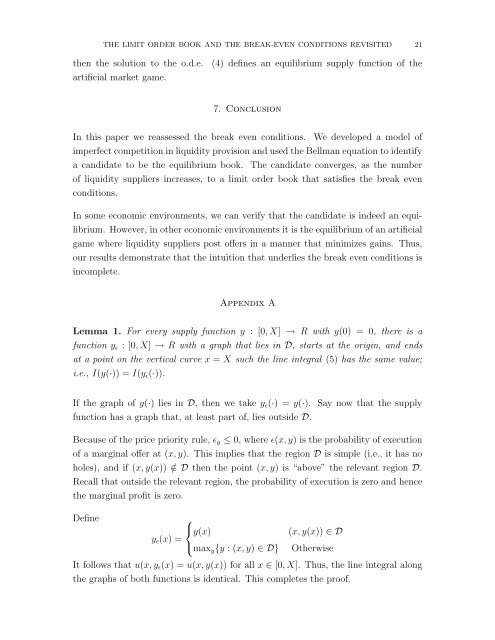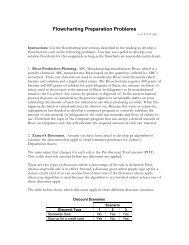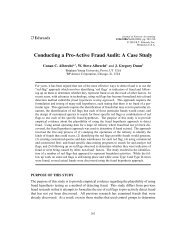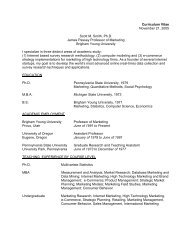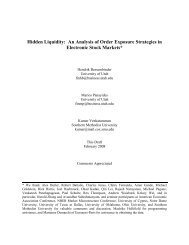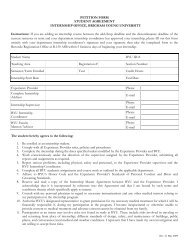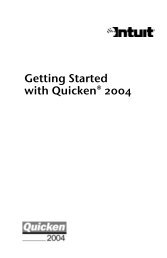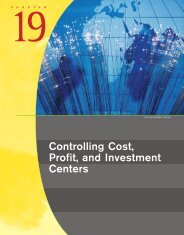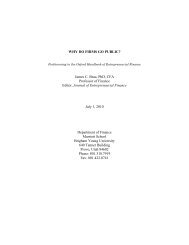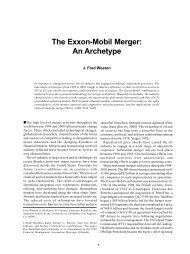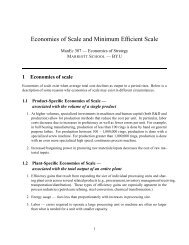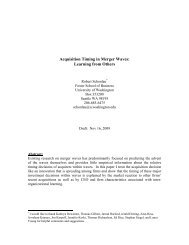The Limit Order Book and the Break-Even ... - Marriott School
The Limit Order Book and the Break-Even ... - Marriott School
The Limit Order Book and the Break-Even ... - Marriott School
Create successful ePaper yourself
Turn your PDF publications into a flip-book with our unique Google optimized e-Paper software.
THE LIMIT ORDER BOOK AND THE BREAK-EVEN CONDITIONS REVISITED 21<br />
<strong>the</strong>n <strong>the</strong> solution to <strong>the</strong> o.d.e.<br />
artificial market game.<br />
(4) defines an equilibrium supply function of <strong>the</strong><br />
7. Conclusion<br />
In this paper we reassessed <strong>the</strong> break even conditions. We developed a model of<br />
imperfect competition in liquidity provision <strong>and</strong> used <strong>the</strong> Bellman equation to identify<br />
a c<strong>and</strong>idate to be <strong>the</strong> equilibrium book. <strong>The</strong> c<strong>and</strong>idate converges, as <strong>the</strong> number<br />
of liquidity suppliers increases, to a limit order book that satisfies <strong>the</strong> break even<br />
conditions.<br />
In some economic environments, we can verify that <strong>the</strong> c<strong>and</strong>idate is indeed an equilibrium.<br />
However, in o<strong>the</strong>r economic environments it is <strong>the</strong> equilibrium of an artificial<br />
game where liquidity suppliers post offers in a manner that minimizes gains. Thus,<br />
our results demonstrate that <strong>the</strong> intuition that underlies <strong>the</strong> break even conditions is<br />
incomplete.<br />
Appendix A<br />
Lemma 1. For every supply function y : [0, X] → R with y(0) = 0, <strong>the</strong>re is a<br />
function y ɛ : [0, X] → R with a graph that lies in D, starts at <strong>the</strong> origin, <strong>and</strong> ends<br />
at a point on <strong>the</strong> vertical curve x = X such <strong>the</strong> line integral (5) has <strong>the</strong> same value;<br />
i.e., I(y(·)) = I(y ɛ (·)).<br />
If <strong>the</strong> graph of y(·) lies in D, <strong>the</strong>n we take y ɛ (·) = y(·). Say now that <strong>the</strong> supply<br />
function has a graph that, at least part of, lies outside D.<br />
Because of <strong>the</strong> price priority rule, ɛ y ≤ 0, where ɛ(x, y) is <strong>the</strong> probability of execution<br />
of a marginal offer at (x, y). This implies that <strong>the</strong> region D is simple (i.e., it has no<br />
holes), <strong>and</strong> if (x, y(x)) /∈ D <strong>the</strong>n <strong>the</strong> point (x, y) is “above” <strong>the</strong> relevant region D.<br />
Recall that outside <strong>the</strong> relevant region, <strong>the</strong> probability of execution is zero <strong>and</strong> hence<br />
<strong>the</strong> marginal profit is zero.<br />
Define<br />
⎧<br />
⎨y(x)<br />
(x, y(x)) ∈ D<br />
y ɛ (x) =<br />
⎩max y {y : (x, y) ∈ D} O<strong>the</strong>rwise<br />
It follows that u(x, y ɛ (x) = u(x, y(x)) for all x ∈ [0, X]. Thus, <strong>the</strong> line integral along<br />
<strong>the</strong> graphs of both functions is identical. This completes <strong>the</strong> proof.


